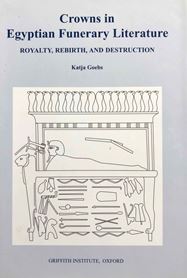| Main » Ad Board » ДРЕВЕН ЕГИПЕТ И АФРИКА » Религия и философия |
Katja Goebs - Crowns in early Egyptian Funerary Literature
| 29.08.2020, 05:35 | |
За древните египтяни царските корони и особено двойната корона на обединените Горен и Долен Египет не са просто символ на власт. В техните представи те притежават свръхестествени, мистични и магически измерения, превръщащи ги в мощни протективни и апотропични инструменти. В първите древноегипетски литературни паметници с религиозно съдържание: Текстовете от пирамидите и Текстовете от саркофазите короните на фараона са описани като негови спътници след смъртта във възнасянето му към царството на боговете, а едновременно с това и като персонифицирани богини-хранителки. - на английски език, от Academia.Edu, формат PDF.Сваляне с ляв бутон (downloading by left button) и после през бутона Download. Academia.Edu изисква регистрация или влизане през Фейсбук/Google акаунт за сваляне на файловете/ Academia.Edu needs a registration (you can use the Facebook or Google account) for downloading. АЛТЕРНАТИВЕН ЛИНК / ALTERNATIVE LINK: - на английски език, от Google Drive,формат PDF. Сваляне с ляв бутон (downloading by left button) от страницата на предоставящия сървър, после през бутона стрелка надолу/after by down arrow button.
| |
| Views: 739 | Placed till: 29.09.2020 | Rating: 0.0/0 | |

